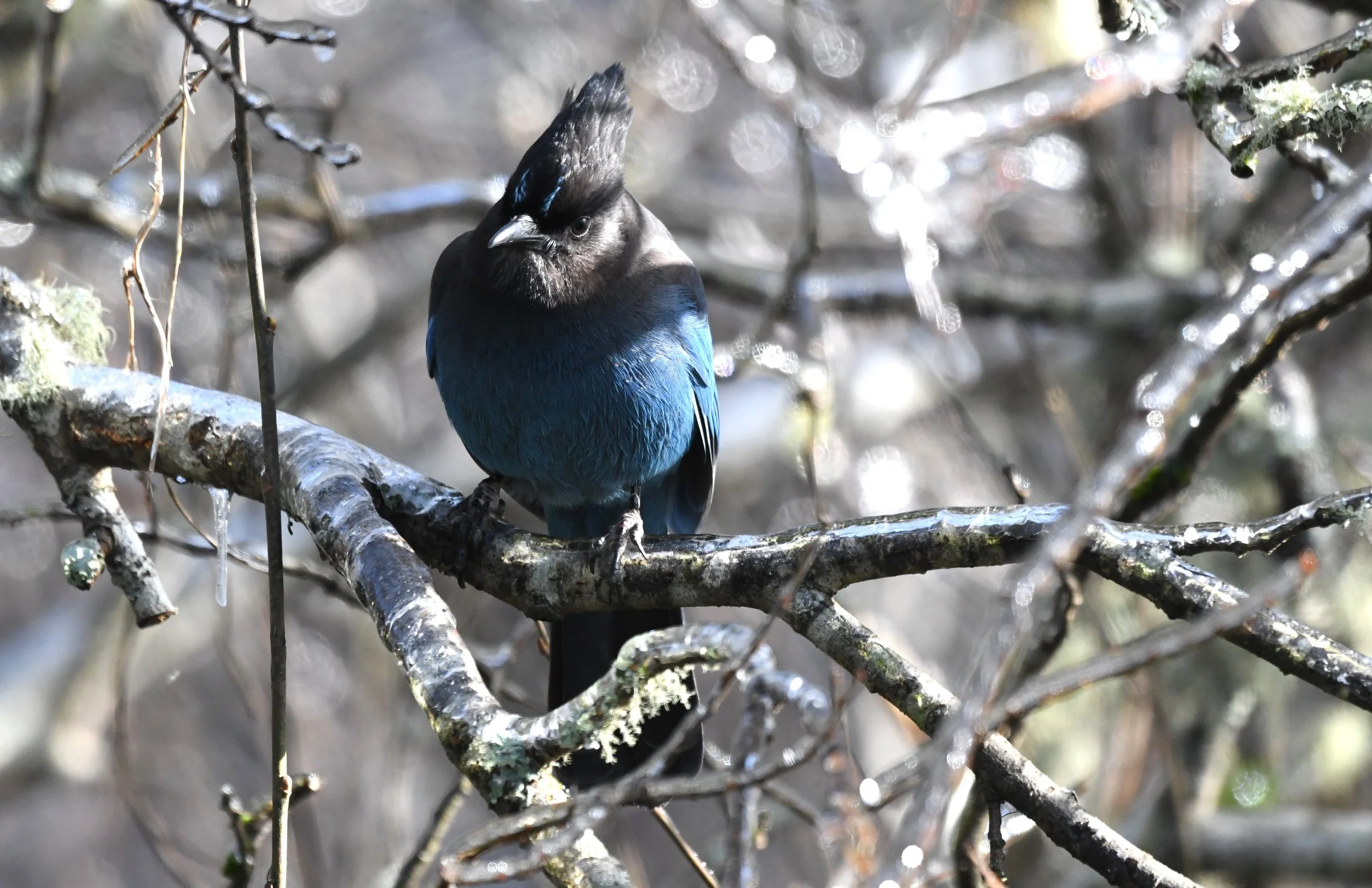Count us in!
Christmas Bird Count helps reveal which species are present




By Michael Edwards
For the TODAY
A metallic chatter interrupts the gentle squeaking of American widgeons waddling in the muck. You exchange your coffee for binoculars and swing around in time to spot a belted kingfisher diving into the shallows. Master of bird photography, Ruth Shelly, beat you to the punch on the great blue heron but look at you, eagle eye, the first one on your team to spot a kingfisher.
“I’m freezing my keister off, but who knew watching birds with fellow eccentrics could be so fun?”
The president of the Seven Capes Bird Alliance, Dawn Villaescusa, said The Christmas Bird Count is “the longest-running community science project in the world.”
Villaescusa, Caren Willoughby and Mark Elliott started the local count in 2010 with the sponsorship of what was then Lincoln City Audubon. Nationally, this year will be the 125th event.
Bird counts will happen at Tillamook Bay on Saturday, Dec. 14, in Lincoln City on Thursday, Dec. 19 and on the Yaquina Bay on Saturday, Dec. 28.
The event owes its origin to the 19th Century holiday tradition known as the Christmas "Side Hunt." Hunters bundled up and toted their Springfield rifles and bleary-eyed Labrador Retrievers into the frosty countryside in search of animals to shoot. Whoever returned to the collection site with the most birds and fur bearing critters won the competition.
Back in 1883, shooting 47 chickadees because “Gosh darn it, Uncle Joe always comes back with 46 sparrows and the old coot isn’t beating me this year” wasn’t mortifying. To many Americans, wildlife was inexhaustible.
In early New England, passenger pigeons blackened the New England sky. During an intermission from charging opinionated women with sorcery, Puritan minister Cotton Mather sat on an American chestnut stump, buckled his shoe and gazed at a flight of passenger pigeons “a mile wide and taking several hours to pass overhead.” By the end of the 19th Century, the entire population of passenger pigeons, an estimated five billion birds, had been hunted to extinction.
Scientists understood that the growing American population shooting diminishing populations of animals ensured that unless behaviors were altered, the fates of the passenger pigeon and the American bison would be replicated over and over again.
Beginning on Christmas Day 1900, Audubon Society ornithologist Frank M. Chapman instituted the Christmas Bird Census. Instead of shooting chickadees, red tailed hawks and mallards for sport, census participants harvested a few geese for Christmas dinner, slung their rifles over their shoulders and tallied the birds they saw on the way home.
“There are specific rules around bird identification for the count,” Villaescusa said. “For instance, the Merlin app can be used to pin down bird identification but only if you also see or hear the bird yourself. Sounds can be used to help attract birds since the count is not during mating season, but must be used judiciously. I prefer the Sibley field guides in general and Crossley guides for raptors and waterfowl. Sibley pocket guides are handy and easy to carry.”
Common species identified on the Central Oregon Coast are the brilliant black and yellow Townsend’s warblers, metal chimney drumming northern flickers, black hooded dark eyed juncos and perpetually annoyed Stellar’s jays. According to Villaescusa, Lincoln City’s birders identified two species uncommon to the Central Oregon Coast — the black phoebe and the scrub jay.
The black phoebe is a songbird common to Oregon’s warmer south coast, and the scrub jay is a resident of the dryer, oak woodlands of the Willamette Valley. Using the information provided by citizen scientists, researchers might want to determine why these two species are exploring beyond their ranges. Is the Central Coast warming enough to attract black phoebes and drying sufficiently to lure scrub jays? Are there environmental factors in their home ranges that are driving the phoebes north and the jays west? Citizen scientists help researchers determine which bird species are thriving, which ones are stable and which ones are in trouble. Along with helping scientists, participating in the Christmas Bird Count is a great way to make friends and replenish dwindling Vitamin D stores.
Season’s Tweetings!
Citizen scientists interested in joining the Christmas Bird Count can contact the Seven Capes Bird Alliance to be placed on a bird identification team. If you live within the count circle of whichever count you choose, you can be a “backyard/feeder counter” and count at home. The link to the map is found at goo.gl/rtXuAi.
To register for the Dec. 19 Lincoln City count, email info@sevencapes.org. To register for the Dec. 28 Yaquina Bay count, email kaifrueh2@gmail.com.To register for the Dec. 14 Tillamook Bay event, email Allison.anholt@gmail.com.
For more information, go to sevencapes.org.
